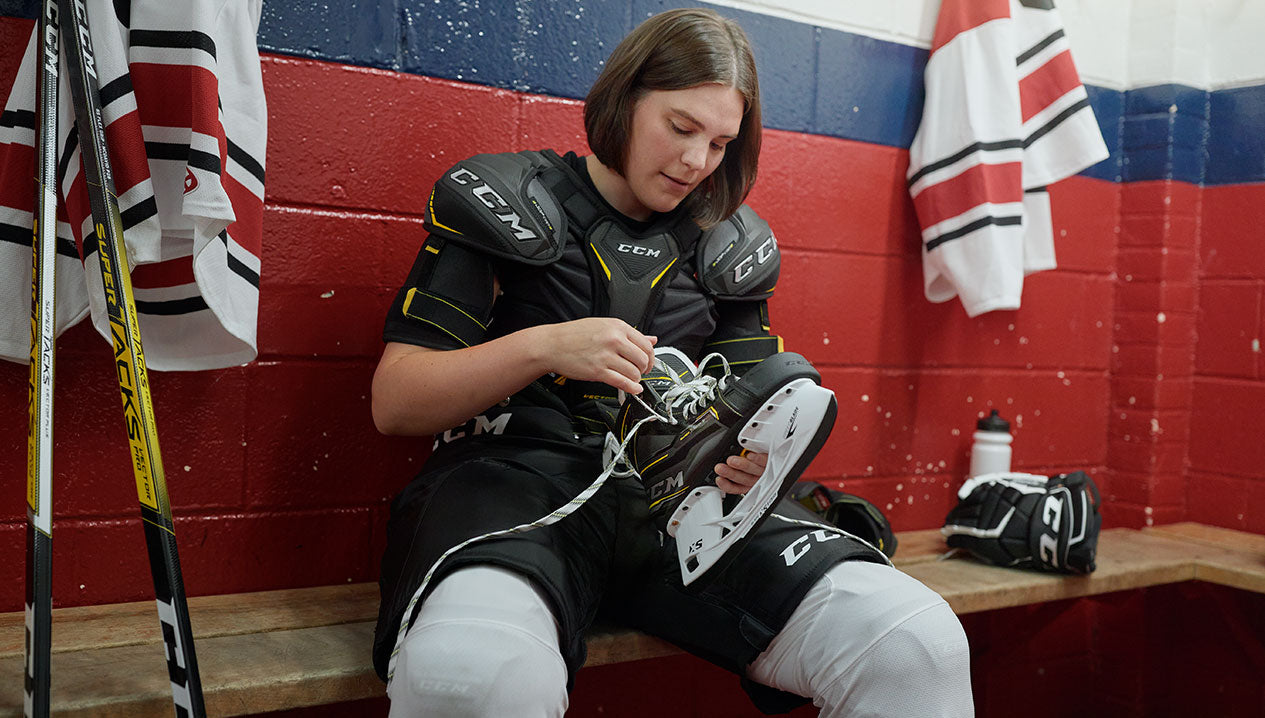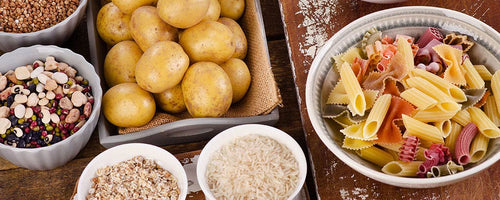Sports Nutrition for People with Celiac Disease

Whether you are an athlete or not carbohydrates remain our main source of energy. Carbohydrates are found in fruits, dairy products and grain products like breads and cereals. Unfortunately, people with Celiac disease cannot eat products containing wheat, barley, or rye as they contain gluten. Celiacs are hypersensitive to gluten, and so when it is ingested, it leads to injury to the small intestine, making it difficult to digest food properly. Long-term injury leads to digestive problems, vitamin and mineral deficiencies, anemia, fatigue, dental enamel defects, and skin rashes amongst other things. The only way to reverse the damage is to follow a gluten-free diet.
Many of us rely on carbs from bread, pasta, and even packaged foods containing gluten before our sports events, so what’s someone with celiac disease to do? Plus, many gluten-free foods are not enriched like gluten-containing foods are. Luckily, there are still many gluten-free foods that provide the right amount of nutrients for our moving body’s needs.
Specific Concerns
Vitamin deficiency: Nutrients are lost during processing of certain foods, such as when wheat is processed to make white flour as we see in white bread and pasta. For this reason, the lost nutrients are added back and as a result we obtain “enriched” flour. In contrast to their gluten-containing counterparts, not all gluten-free products (for example corn or rice pasta) are enriched with vitamins and minerals. Also, because many people with celiac disease also have lactose intolerance (usually short-term), they may avoid dairy products, which may lead to low intake of the nutrients provided by dairy foods. Therefore, the most common vitamins and minerals to be lacking are B vitamins, calcium, vitamin D, and magnesium. Without special precautions, nutritional deficiencies can arise after long-term intake of these foods.
Below is a table of the greatest gluten-free food sources of these vitamin and minerals:
| GLUTEN-FREE FOOD SOURCES | |
|---|---|
Vitamins & Minerals |
Food Sources |
| Thiamin (vitamin B1) | Sunflower seeds, black beans, tuna, green peas, lentils, soybeans, oatmeal, pork |
| Riboflavin (vitamin B2) | Mushrooms, cooked spinach, pork, salmon, soybeans, tempeh, eggs |
| Niacin (vitamin B3) | Oatmeal, mushroom, potato, liver (chicken, pork, beef), anchovies, tuna, peanuts |
| Folate (vitamin B9) | Green leafy vegetables (spinach, romaine lettuce, turnip greens), asparagus, lentils, beets, broccoli |
| Iron | All types of meat, lentils, beans, soybeans, tofu |
| Calcium | Dairy products, fortified non-dairy beverage, dark leafy greens, tofu prepared with calcium sulfate, sardines, salmon |
| Vitamin D | Salmon, sardines, shrimp, cod |
| Magnesium | Green leafy vegetables (spinach, Swiss chard), pumpkin seeds, sunflower seeds, black beans, black-eyed peas |
Why do we care about these deficiencies? Well, having low levels may have an effect on sports performance. Many of these vitamins are involved in key reactions related to glucose breakdown, which provides the body with energy. It is therefore important that individuals who exercise obtain the minimum requirements as to prevent changes in fuel usage that could possible impair performance.
Magnesium for example plays an important role in several processes required for exercise. A deficiency of the mineral impairs performance and amplifies the negative effects of strenuous exercise. Although there are many factors that lead to muscle spasms, a magnesium deficiency can also be a cause.
Iron is a mineral that is important for good health as it carries oxygen to all parts of your body.
Low iron levels can lead to anemia which can leave you tired, irritable and can cause a rapid heartbeat or restless legs. Also, low iron status is associated to decreased exercise performance and endurance.
Women have higher iron requirements and are at a higher risk of deficiency as their lower caloric requirements do not always cover their iron needs. Plus, certain nutrients can inhibit the absorption of iron. These include phytates and oxalates found in spinach, swiss chard, and whole grains, tannins in tea and coffee, excessive intake of calcium, zinc, and manganese. Therefore, try to spread the intake of these foods and iron-rich foods by at least an hour. Vitamin C on the other hand increases absorption of non-heme iron (iron found in plant foods). So pair iron-rich foods with oranges, red peppers or strawberries as in these suggestions:
- Top your breakfast cereal with sliced strawberries;
- Top a fresh spinach salad with sliced bell peppers, red onions, strawberries, and a balsamic vinaigrette;
- Make a tofu and broccoli stir-fry.
Finally, for someone with celiac disease, following a strict gluten-free diet will reduce the incidence of digestive symptoms like diarrhea and constipation, both of which have a negative effect on mental and physical performance. If you are unable to control these symptoms, consider adding fiber if you suffer from constipation and reducing it if you have diarrhea. Some examples of foods high in fiber include whole grains, fruits, vegetables, and legumes.
Bottom Line
For individuals with celiac disease, following a strict gluten-free diet to heal their intestine and ensuring they consume the correct amount of nutrients can avoid certain deficiencies that are linked to sports performance.
Note: The information included is based on the best available evidence at the time and may not be applicable for all athletes. Please consult your local dietitian to get personalized advice.
Sources:
Kreider, R. B., Wilborn, C. D., Taylor, L., Campbell, B., Almada, A. L., Collins, R., . . . Antonio, J. (2010). ISSN exercise & sport nutrition review: Research & recommendations. J Int Soc Sports Nutr Journal of the International Society of Sports Nutrition, 7(1), 7. doi:10.1186/1550-2783-7-7
Lundberg, J. O., Carlstrom, M., Larsen, F. J., & Weitzberg, E. (2010). Roles of dietary inorganic nitrate in cardiovascular health and disease. Cardiovascular Research, 89(3), 525-532. doi:10.1093/cvr/cvq325
Position of the American Dietetic Association, Dietitians of Canada, and the American College of Sports Medicine: Nutrition and Athletic Performance. (2016).
Rosenbloom, C. (2012). Sports nutrition a practice manual for professionals. (5th ed.). Chicago, Ill.: Academy of Nutrition and Dietetics.
Siervo, M., Lara, J., Ogbonmwan, I., & Mathers, J. C. (2013). Inorganic Nitrate and Beetroot Juice Supplementation Reduces Blood Pressure in Adults: A Systematic Review and Meta-Analysis. Journal of Nutrition, 143(6), 818-826. doi:10.3945/jn.112.170233
Zeina is a registered dietitian-nutritionist and is part of l’Ordre professionnel des diététistes du Québec and Dietitians of Canada. She currently works at Le Fitness Loft Kinesiology Clinic in Dorval where she consults an active clientele that desires to change their lifestyle habits, whether it is to lose weight, increase muscle mass, improve performance or simply live healthier. Zeina has a passion for teaching and conveying her knowledge about overall healthy eating habits and makes sure every client receives personalized recommendations based on their lifestyle and preferences. For more tips and tricks visit www.TheFoodieRD.com
Join Source Nation to get the latest news on product launches, Source Exclusive product lines, tips and tricks for parents and players, and more!




